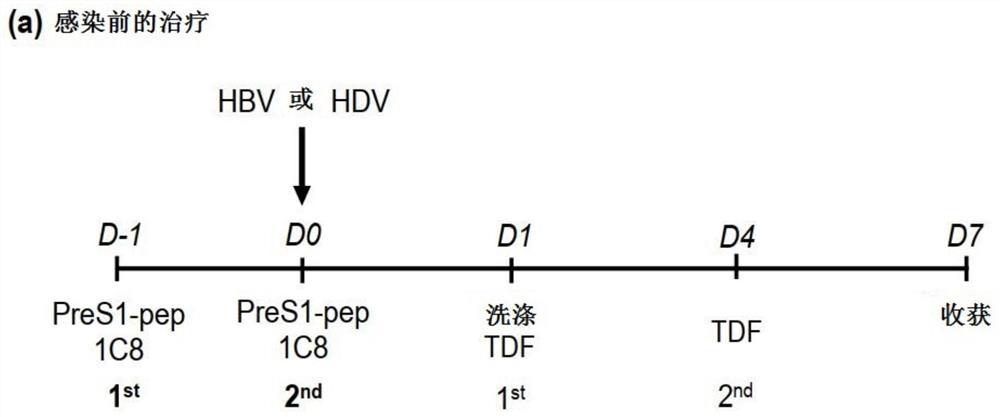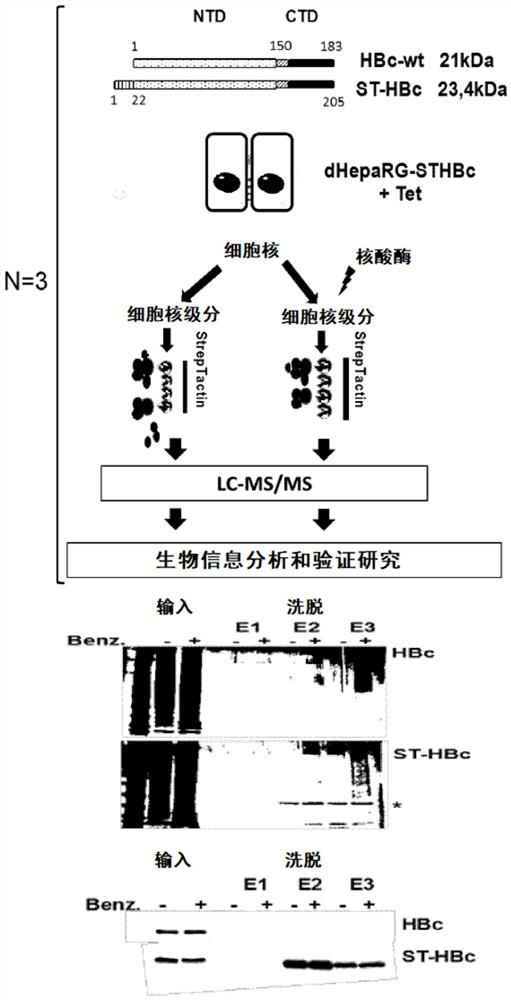Methods for treating hepatitis b virus (HBV) infection
A technology for hepatitis B virus and chronic infection, which can be applied in antiviral agents, pharmaceutical formulas, medical preparations containing active ingredients, etc., and can solve problems such as unclear cell nucleus functions
- Summary
- Abstract
- Description
- Claims
- Application Information
AI Technical Summary
Problems solved by technology
Method used
Image
Examples
Embodiment Construction
[0014] In this study, the inventors demonstrated that SRSF10 is a major factor present in the HBc nuclear complex and can function in the HBV life cycle. Since 1C8 has been shown to regulate the phosphorylation status of SRSF10, the inventors directly investigated whether this molecule, which has been shown to regulate HIV replication, could also inhibit HBV replication. They found that the 1C8 compound was indeed able to inhibit the replication of HBV (genotypes D and C) in persistently infected hepatocytes, strongly reducing intracellular HBV RNAs by 60-70% (see Figure 5A ), and the secretion of viral antigens (HBs and HBeAg) and HBV virions in the cell culture supernatant was reduced by 60-70% (see Figure 5B ). The IC8 compound was also able to inhibit HBV cccDNA establishment in the setting of a nascent infection: addition of this molecule in hepatocytes before and during HBV inoculation (genotypes C and D) strongly reduced cccDNA establishment (70% reduction, respective...
PUM
 Login to View More
Login to View More Abstract
Description
Claims
Application Information
 Login to View More
Login to View More - R&D
- Intellectual Property
- Life Sciences
- Materials
- Tech Scout
- Unparalleled Data Quality
- Higher Quality Content
- 60% Fewer Hallucinations
Browse by: Latest US Patents, China's latest patents, Technical Efficacy Thesaurus, Application Domain, Technology Topic, Popular Technical Reports.
© 2025 PatSnap. All rights reserved.Legal|Privacy policy|Modern Slavery Act Transparency Statement|Sitemap|About US| Contact US: help@patsnap.com



